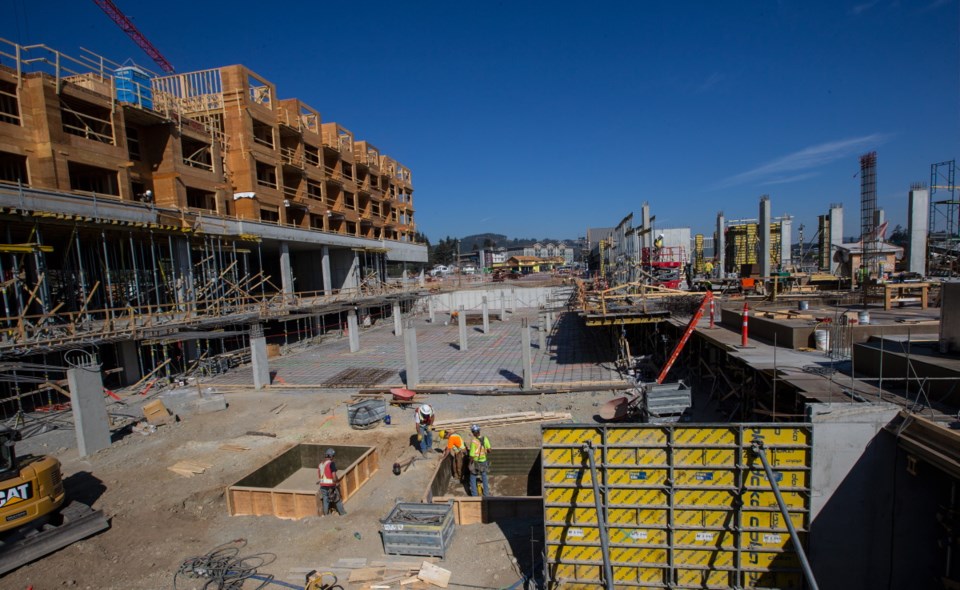Greater Victoria home builders ramped up production as temperatures rose this summer, according to data released Tuesday by Canada Mortgage and Housing Corporation.
“It was definitely a strong August, especially on the multi-family side of things,” said Casey Edge, executive director of the Victoria Residential Builders’ Association.
Builders started 580 housing units in the region in August, a huge jump from the 183 started during the same month last year. Since January, builders have started 2,765 new homes, up from the 2,096 started through the first eight months of 2017.
Braden Batch, senior market analyst for Canada Mortgage and Housing Corp., said a majority of starts were again in Langford and were mainly multi-family.
Last month there were 479 apartment units started, compared to 66 single-family homes. Year-to-date, there have been 1,948 apartments started and 587 single-family homes.
Edge said those numbers speak volumes about the state of the market in Greater Victoria.
“What it says is the cost of land continues to increase, while Langford [where there is space] is still carrying the load for the region to a large degree,” he said. Edge said building is continuing at an unheard of pace, and Greater Victoria is likely to reach the same kinds of totals recorded in 2017.
In 2017, Greater Victoria builders started 3,862 new homes — the most recorded since 4,439 were started in 1976.
Builders started 2,966 multifamily units and 896 single-family homes last year, easily eclipsing 2016’s total of 2,933 starts.
Edge called the totals an anomaly, as the region tends to build about 2,000 new homes a year in a balanced market. “We are talking about numbers that haven’t been seen in decades,” he said, noting it’s likely down to having baby boomers, Generation X and the millennials all moving in the market at the same time. “As much as governments like to use the scapegoats of foreign buyers and all the rest, it’s that combination.”
Despite the building boom, the region is still dealing with the challenge of affordability, he noted.
There are issues that could slow things down and reduce demand for new builds, he said. “Things can turn quickly. There are still some headwinds — new mortgage rules, tougher stress tests for first-time buyers, increased interest rates — that could increase the cost of housing.”



